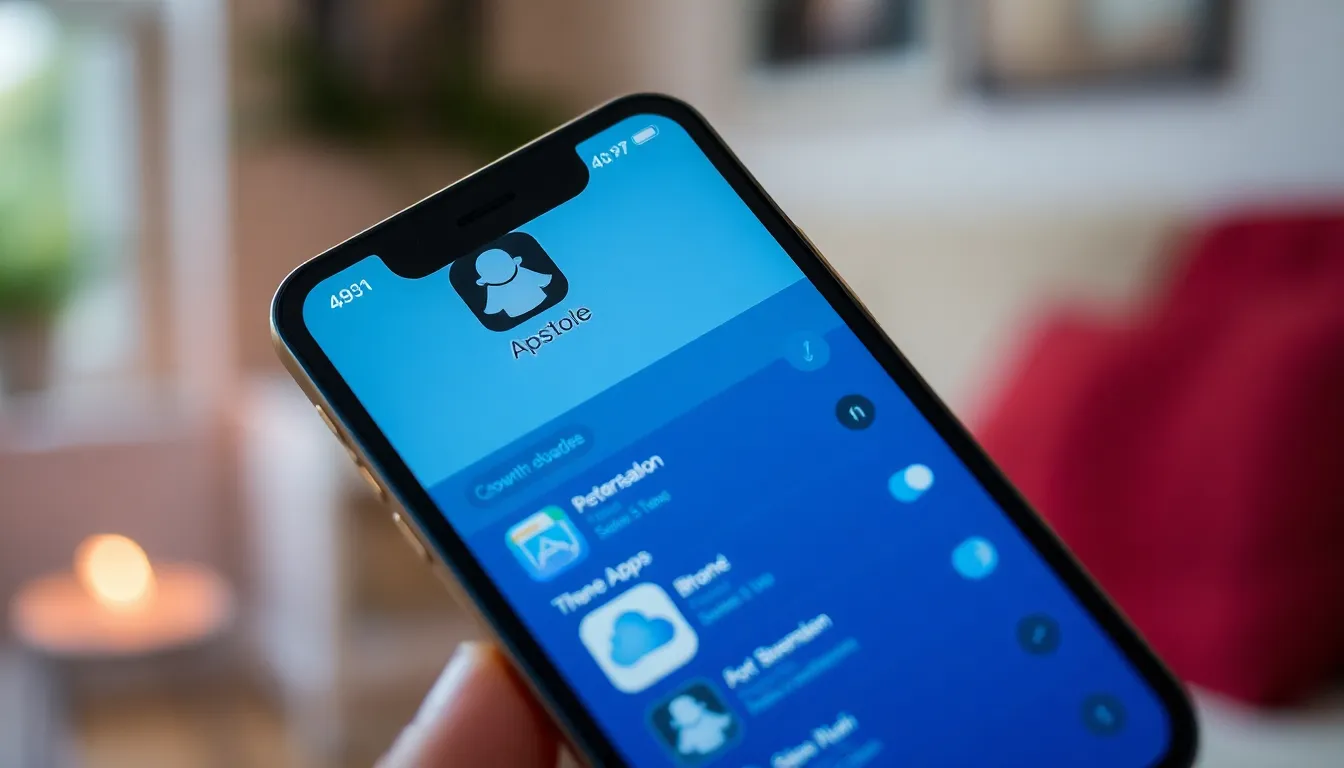Table of Contents
ToggleEver wondered what apps have been sneaking into your iPhone when you weren’t looking? It’s like a digital game of hide and seek, and trust us, you don’t want to miss out on your latest tech treasures. Whether it’s that new productivity tool or the latest addictive game, knowing how to track recent app downloads can keep your device organized and your mind at ease.
Understanding Recent App Downloads on iPhone
Tracking recent app downloads on iPhone provides insights into the latest additions to the device. Users can stay organized and informed by identifying new tools or games quickly. Accessing this information helps maintain digital clarity.
To see recent downloads, go to the App Store, then select your profile icon in the top right corner. This action opens the account settings where users can view their purchase history. The “Purchased” section lists all downloaded apps. It differentiates between apps installed and those previously owned.
iPhone users can tap “Not on this iPhone” to find apps not currently installed. This allows for easy reinstallation of previously enjoyed apps without searching repeatedly. Notifications also play a role; updates or new downloads prompt alerts that keep users in the loop.
Recognizing the significance of app organization, using folders or groups improves accessibility. Users can sort apps based on usage frequency or categories, enhancing navigation through their app library. Staying updated on app downloads leads to a more efficient and personalized experience.
Managing downloads ensures that users engage with relevant apps that meet their needs. Regularly checking recent downloads may uncover useful tools users previously overlooked. Familiarizing oneself with these tools promotes better productivity and enjoyment on the iPhone.
Checking App Download History

Tracking app downloads on an iPhone is straightforward. Users can access their download history through a couple of methods.
Using the App Store
Open the App Store and tap the profile icon located at the top right corner. Users should select “Purchased” to view all apps downloaded previously and currently. Apps not on the device appear with a cloud icon, indicating they can be re-downloaded easily. This list differentiates between purchased apps and subscriptions, allowing users to manage their apps effectively. Users can scroll through this section to find specific apps or check the most recently downloaded ones.
Viewing via Settings
Access the Settings app on the iPhone for another way to view downloads. Tap on your name at the top of the Settings screen, then select “Media & Purchases.” Users can review their purchase history here, displaying all downloaded apps in a convenient list format. This section also includes details about the download dates and any associated transactions, enabling better management of app activity. Users can check the “Subscriptions” section as well for applications with monthly or annual plans, ensuring they’re aware of active subscriptions and expenses.
Utilizing Third-Party Apps
Third-party apps can enhance the process of tracking recent app downloads on an iPhone. These applications often provide additional features and insights not available through the standard methods.
Recommended Apps for Tracking
Several apps help monitor recent app downloads effectively. App Store Analytics offers in-depth analysis of installed applications. App Tracker provides users with detailed information about download dates and usage stats. Purchase History assists in organizing previously downloaded applications. These tools combined can simplify management, allowing users to stay updated with recent and past downloads seamlessly.
Pros and Cons of Third-Party Solutions
Third-party solutions offer benefits alongside potential drawbacks. Enhanced tracking capabilities allow for better management of apps. Additionally, some applications provide notifications for updates. However, privacy concerns arise as these apps often request personal data. The integration may not be as smooth compared to built-in options. Weighing individual preferences helps users decide if these solutions meet their needs.
Best Practices for Managing App Downloads
Track app downloads consistently to maintain an organized device. Begin by regularly checking the App Store and your purchase history. This habit ensures users don’t overlook useful apps, whether they are games or essential tools.
Use folders for app organization. Group similar apps together to enhance accessibility and streamline navigation. For instance, create a folder for productivity apps separate from entertainment apps.
Utilize iOS features effectively. Notifications play an essential role in keeping users updated about app updates and new downloads. Adjust notification settings to prioritize important alerts, ensuring timely awareness of app changes.
Review subscription plans frequently. By monitoring active subscriptions, users stay informed about their spending and can make adjustments as needed. Managing subscriptions prevents unnecessary expenses and allows users to make informed decisions.
Consider third-party apps for enhanced tracking. Tools like App Store Analytics or App Tracker provide additional insights into download history. These apps may offer features not found in native settings, enhancing the overall app management experience.
Balance convenience and privacy when using external apps. Weigh the benefits of more comprehensive tracking against potential data privacy concerns. Prioritize user preferences to ensure a satisfying app management approach.
Stay vigilant with app updates. Regularly check for updates to ensure access to the latest features and security enhancements. An updated app library contributes to a more efficient and secure iPhone experience.
Staying informed about recent app downloads can significantly enhance the iPhone experience. By regularly checking the App Store and using the Settings app, users can easily track their downloads and manage subscriptions. Organizing apps into folders not only improves accessibility but also keeps the device clutter-free.
Incorporating third-party apps may offer additional insights but should be approached with caution due to privacy considerations. Ultimately, maintaining awareness of app updates and download history empowers users to make the most of their devices. This proactive approach leads to a more personalized and efficient iPhone experience.





